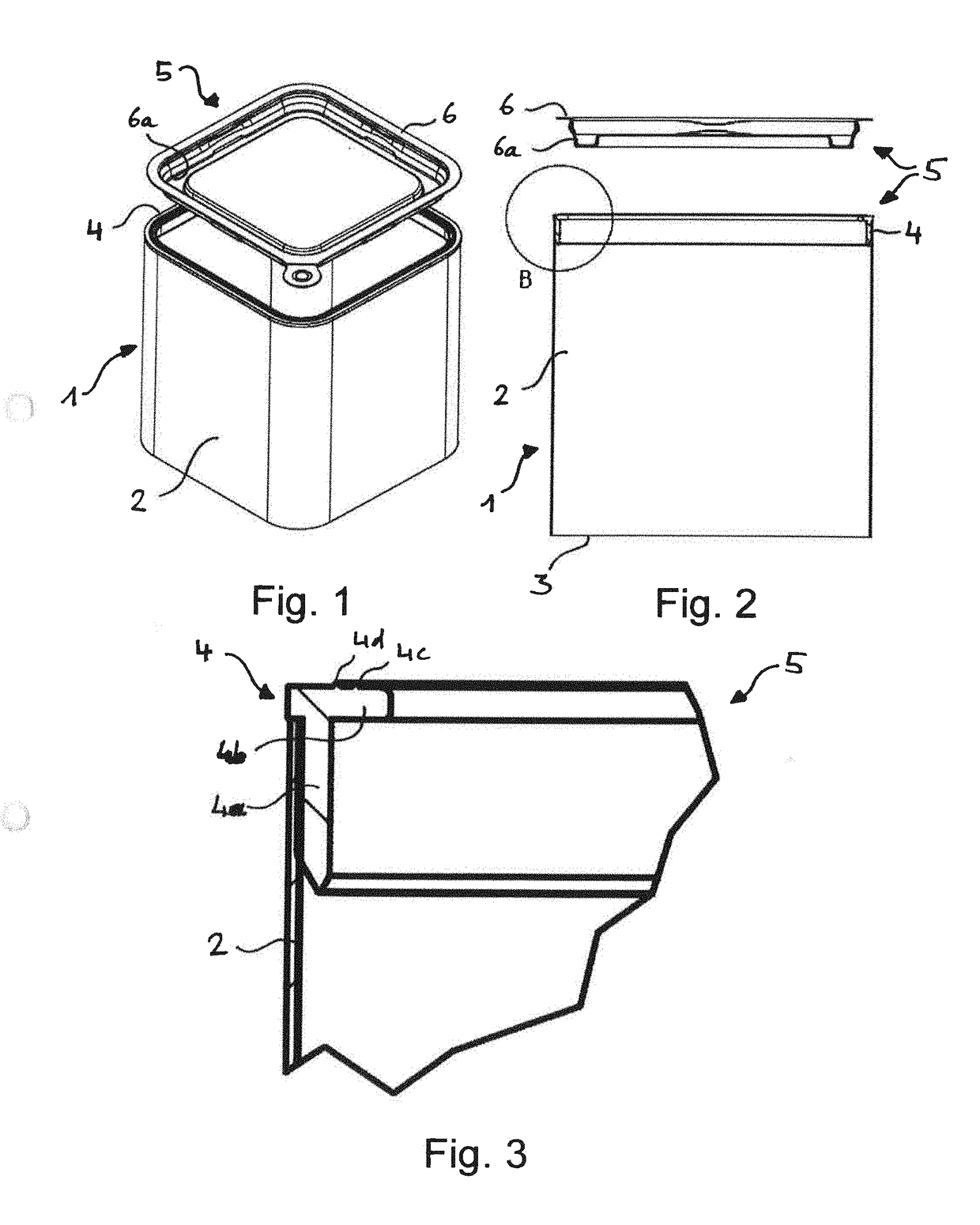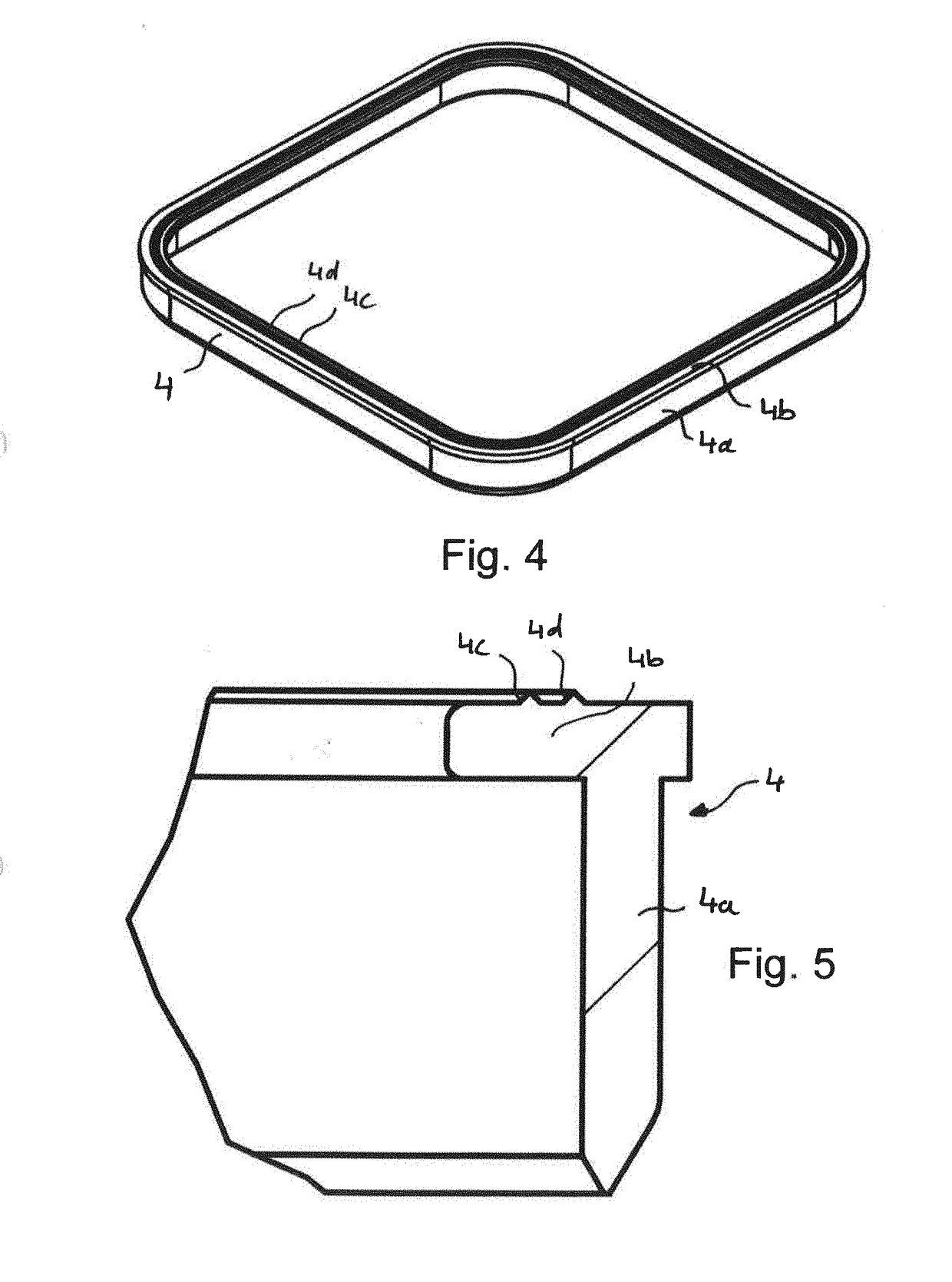Lid assembly for a packing container, packing container with such a lid assembly, and method for manufacturing same
- Summary
- Abstract
- Description
- Claims
- Application Information
AI Technical Summary
Benefits of technology
Problems solved by technology
Method used
Image
Examples
Embodiment Construction
[0042]Referring to the drawings, the packing container schematically shown in FIGS. 1 and 2 and designated by reference number 1 as a whole is formed by a so-called composite can in this exemplary embodiment and has a sleeve 2, which is manufactured, for example, from a paper or cardboard composite and may be provided with an essentially gas-tight and liquid-tight inner lamination with an inner, sealable or weldable cover layer, e.g., one made of polymer-coated aluminum. The sleeve 2, which does not, of course, necessarily have to have the more or less square cross section shown but may also have any other desired cross-sectional shape, e.g., a round, oval, polygonal shape, etc., is closed on its underside in the conventional manner by means of a bottom part 3 (FIG. 2), which may be manufactured itself from corresponding materials just as the sleeve 2, but also of metal, plastic or corresponding composites with high gas-tightness and liquid-tightness.
[0043]A lid ring 4 of a lid asse...
PUM
| Property | Measurement | Unit |
|---|---|---|
| Thickness | aaaaa | aaaaa |
| Height | aaaaa | aaaaa |
| Height | aaaaa | aaaaa |
Abstract
Description
Claims
Application Information
 Login to View More
Login to View More - R&D
- Intellectual Property
- Life Sciences
- Materials
- Tech Scout
- Unparalleled Data Quality
- Higher Quality Content
- 60% Fewer Hallucinations
Browse by: Latest US Patents, China's latest patents, Technical Efficacy Thesaurus, Application Domain, Technology Topic, Popular Technical Reports.
© 2025 PatSnap. All rights reserved.Legal|Privacy policy|Modern Slavery Act Transparency Statement|Sitemap|About US| Contact US: help@patsnap.com



